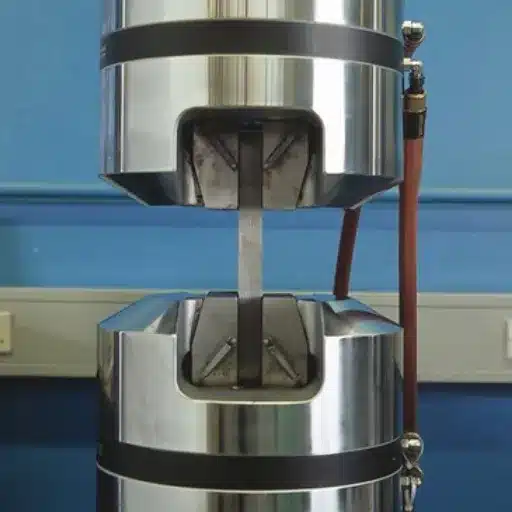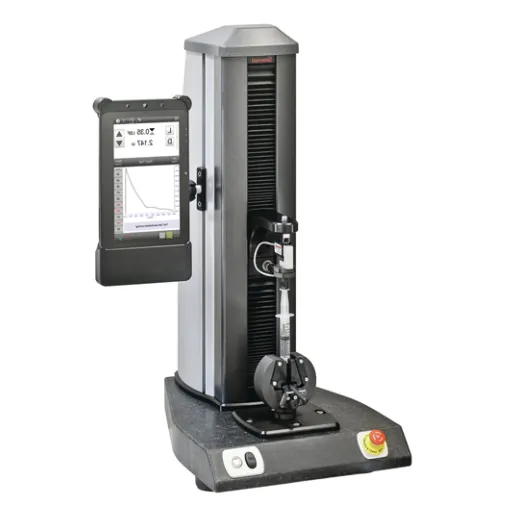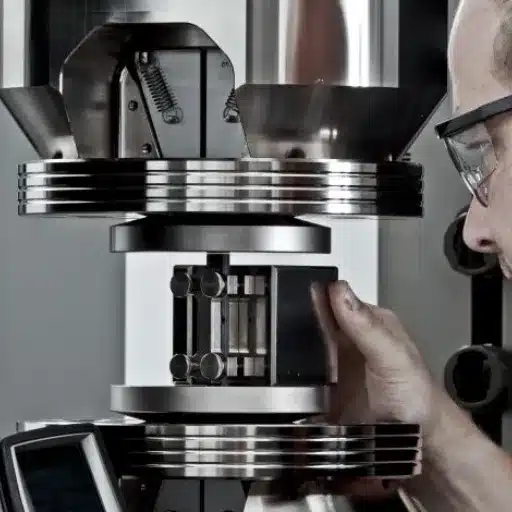Enforcement testing is an indispensable process that helps to ascertain the functional correctness of engineering, quality assurance, and product manufacturing among various other fields of the industry. The very first thing a force test method does is to confirm its hierarchy regarding to the material properties. Then, from a performance standpoint, testing of modification drives innovation at a relatively low cost if the whole process is compliant with safety and reliability standards. Furthermore, the importance of good practices in force testing will be discussed, putting an emphasis on the development of the future together with the responsible way of dealing with it. The article targets both the experts in the industry as well as the common people who are just curious to know how these procedures are affecting the world, as it will provide the reader with valuable insights into the power of force test methods.
Understanding Force Tests
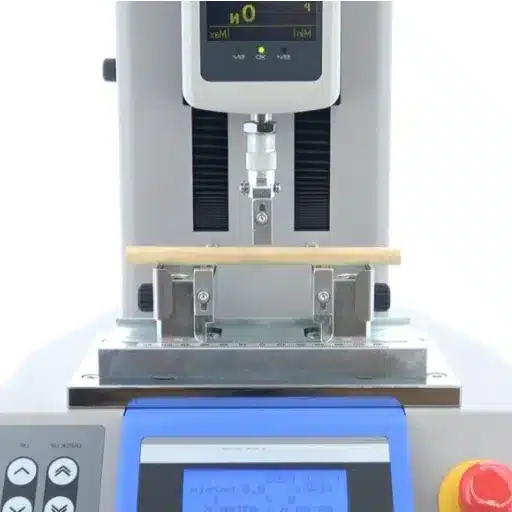
Definition and Importance of Force Measurement
Force measurement is the term used to describe the procedure of applying quantitative measures to the force that was exerted on a substance or object. The application of different techniques such as the use of specialized tools and detection devices is essential to the quantification of such forces to include compression, tension, and torque. The measurement of force has an indispensable part in the whole process of selecting materials, parts, and building structures in several industries that they are either safe, reliable, or efficient.
The main attraction of force measurement is that it can help to prevent poor quality and to lower performance standards. When force is measured accurately, the materials’ strength and durability can be tested, product failures can be prevented, and regulatory requirements can be complied with, all of which are the manufacturers’ concerns. For instance, in the automotive or aerospace industries, proper force testing ensures that components can withstand real-world stresses, directly contributing to both safety and longevity.
Apart from industrial applications the importance of force measurement can be felt in scientific research and healthcare as well. It contributes to the development of advanced materials, medical devices, and human-centered design for tools and equipment. The application of force data is done over a large time period, and the monitoring and analysis are continuous so this is one of the ways through which innovations are produced responsibly, that is by guaranteeing of both function and user safety in a wide range of fields.
Types of Force Tests: Overview
The process of force testing, which is very important, is adopted all over the world to check the materials, components, and finished products in terms of strength, durability, and safety. The number of force tests is quite large; each one is based on a particular kind of application and requirements. Below is a quick guide to some of the most commonly employed force testing methods:
- Tensile Testing: Tensile testing determines the force that will need to be applied to a material until it ruptures. It assists in finding out the tensile strength, elongation, and yield strength. A case in point can be metals such as steel which may have a range of tensile strengths of 400 MPa for the lower grade to more than 1,000 MPa for hardened alloys.
- Compression Testing: The test compresses a material and examines its response. The test provides material insight that the material can resist the pressing force and hence it can be used in certain applications. Compression tests are very common for concrete, which is a major construction material, and thus the compressive strength of concrete can vary from 30 to 50 MPa for standard grades.
- Flexural Testing: The ability of the material to be flexed without breaking or undergoing any deformation is determined by means of a flexural test. Such tests are critical for the construction industry as they help to find out the suitability of different plastic and foam materials as well as composites for application in the automotive and aerospace industries, which may require specific properties of the materials.
- Shear Testing: The shear testing setup measures the extent to which a material resists sliding forces acting on it in opposite directions. This method of testing is crucial to the evaluation of adhesives, fasteners, and welded joints.
- Torsion Testing: In torsion tests the forces acting on the material are the ones that twist it. The results of such tests are the material’s shear modulus and the area of resistance to rotational stresses. Among others, shafts, fasteners, and drivetrain components forming part of the automotive field are typical applications.
- Hardness Testing: Like a material’s resistance to permanent deformation or indentation, the testing of hardness is one of the most frequently used methods in the material testing laboratories. This one is carried out through a number of ways such as Brinell, Rockwell, or Vickers hardness scales. One of the major applications of titanium testing for hardness is aerospace, where only the toughest materials are allowed.
Applications of Force Testing in Various Industries
Across the spectrum of industries, force testing emerges as a crucial aspect in the quest for reliable, durable, and efficient materials and products. The next-gen tech and the availability of force testing as per the strictest criteria of the various sectors are among the many factors that helped the process to be distinct across different industries.
🛩️ Aerospace Industry
Testing the force of the aerospace industry is one of the most important activities. The force testing that is done through the use of aluminum alloys and composites is of great concern in the tensile and compression area, which allows one to determine the mechanical properties of the very materials being used. Besides, the FDA still regards the application of force testing in airplanes and the like as the most critical in regulating safety in the industry. For instance, it is proper to say that the use of advanced titanium elements in the engineering of aircraft structures is one area where each of the different types of tests that come under the canopy of force has made a difference regarding the strength of the material in terms of forces exerted on it by air pressure, which is very high at some points during the flight.
🚗 Automotive Industry
Force testing represents a process of investigation in the automotive sector that is absolutely crucial and is also going to be a major supporter of the eventual launch of engine components, suspensions, and braking systems that are durable. The testing of parts via standard automotive procedures is the only way to get the needed confirmation that the parts are of the quality specified in terms of their ability to handle dynamic loads, vibrations, and different environmental conditions. The latest statistics suggest that the tendency towards crash simulation techniques has become more pronounced and along with that the force testing is already being used for the evaluation of vehicle deformation and passenger safety in the event of collisions. The application of creative materials like high-strength steel and carbon fiber composites has gained wide acceptance as the means to not just draw out the overall performance of the vehicle but also, at the same time, cut down on the amount of fuel consumed.
🏗️ Construction and Civil Engineering
The construction sector is using force testing for the assurance of the quality of commonly used building materials like concrete, steel, and reinforced constructions. Among others, compression testing has turned out to be the most important form of testing in this area. A case in point is that the most recent force testing methods have become the backbone of the construction of earthquake-resistant buildings, which require not only the testing of materials for their durability but also their ability to undergo stress without losing their elasticity.
🏥 Medical Device Manufacturing
Medical device manufacturers subject the devices to a series of force tests to ascertain that the devices comply with the standards of the healthcare industry. The reliability of surgical tools, orthopedics, and implantable devices like pacemakers and artificial joints are some of the areas where force testing is being applied and assessed in terms of their sustainability and performance for the long term. The most exciting aspect to emerge from this field is the development of new force measurement technologies that make it possible for example, up to the very minute level of the testing of the use of biocompatible alloys and polymers, thus ensuring that they will be able to stand up to repeated use in hospitals.
📱 Consumer Electronics
In the consumer electronics sector, force testing is a vital aspect of the product reliability testing process, which includes evaluating and reassessing the structural integrity of smartphones, laptops, and wearable devices. Drop tests and button compression tests are typical applications used to simulate real-life conditions in order to maximize the lifespan of the product. The last technical innovations, like foldable displays and ultra-thin devices, have led to the need for more complicated force testing methods that would ensure that the product can last long enough without losing the quality of being lightweight.
Types of Force Tests

Tensile Testing: Purpose and Procedures
Tensile testing is a technique that entails the determination of the strength and mechanical properties of materials under tension. This test is primarily aimed at determining the response of a material when a pulling force is applied, thereby providing information about its tensile strength, elongation, and elasticity. Such information is invaluable to manufacturers and engineers in the selection of materials for different applications, considering durability and safety factors.
The tensile testing procedure generally consists of fixing the specimen of the material between two grips in a testing machine. Then a controlled pulling force is applied by the machine and simultaneously, the reaction of the material is measured. During the test, data on stress and strain are recorded which eventually results in a stress-strain curve. The major values derived from this curve like yield strength and ultimate tensile strength are used to evaluate the material’s performance in tension.
Tensile testing is very important for the aerospace, construction, and electronics industries, where the materials must constantly provide reliable performance under stress. The identification of a material’s limits and its behavior is a step that enables manufacturers to produce products that are both effective and reliable. The contribution of this testing type to the processes of innovation and quality control is significant and spreads over a wide range of fields.
Compression Testing: Techniques and Applications
The process of compression testing is of paramount importance as it helps to determine the behavior of a material when subjected to compressive loads. The testing procedure also provides the manufacturers with the means to evaluate the main features such as compressive strength, deformation, and elasticity. A controlled compressive force is gradually applied to the specimen during the test until it reaches a point of fracture or deformation, thus giving the testers valuable information concerning stress-related material performance. This kind of knowledge is a prerequisite for the assurance that materials will be safe, reliable, and performance up to standard in various applications.
The application of universal testing machines (UTMs) is one of the most common methods used in compression testing, which can exert very accurately controlled forces on the tested specimens. These machines are capable of working with a broad spectrum of materials, from metals and plastics through ceramics to composites. In order to get consistent test results, the specimens are usually prepared in accordance with prescribed standards regarding their shapes and sizes. Testing data, including stress-strain curves, are collected and analyzed during these processes, thus assisting engineers and scientists in making accurate predictions regarding the material’s performance in real-life situations.
The use of compression testing is not limited to one or two industries but rather it has a wide range of applications across various sectors like construction, aerospace, and packaging. For instance, during the construction phase, compression testing is performed to determine the strength of concrete and other building materials, which is a requirement for ensuring structural safety. Likewise, in the packaging industry, compression tests are carried out to evaluate the resistance of materials (like boxes) under stacking loads during storage and transport. This kind of testing is a major contributor to the advancement of material science and the manufacturing of products that are not only durable but also trusted across a variety of industries.
Shear Testing: Methods and Significance
Shear testing is a pivotal technique that reveals the action of materials when they are placed under the forces that cause their layers to slide against each other. Through this testing, the behavior of mechanical characteristics like shear strength, shear modulus, and deformation are revealed to be mainly through the application of forces on the material without failing. Shear testing is very crucial in industries like construction, aerospace, and manufacturing where the knowledge of material performance under stress is a prerequisite for both safety and functionality; hence, its widespread use.
Among various methods of shear testing, some of them are the direct shear test, torsional shear test, and V-notch beam test. The direct shear test is a method that is simple and very common, in which a sample of the material is sandwiched between the two parts of a shear box, and gradually the layer of the material is forced to slide by a controlled force. Torsional shear tests represent the circular or twisting forces to which the material behaves especially in applications of bolts or shafts. The V-notch beam test is meant to measure interlaminar shear strength, which is particularly critical in aerospace or automotive engineering for composite materials.
The significance of shear testing comes from its power to forecast how the materials will react in their actual use. By uncovering the limits of shear strength and deformation, engineers can design structures and products that are not only efficient but also very much reliable. This testing method assures the product’s adherence to the industry standards, thus playing a significant role in the creation of safe products and in the advancement of material science.
Testing Equipment and Instruments
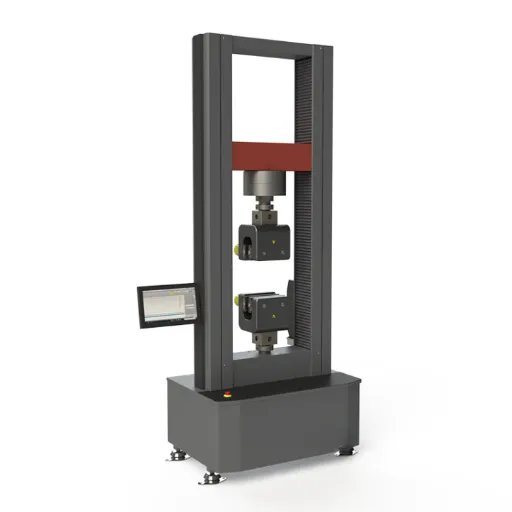
Essential Tools for Force Measurement
The accurate and reliable results of force measurement highly depend on the precision and accuracy of the measurement. Force measurement is one of the most important methods of material testing and structural analysis. Here are the major tools and technologies that are often used in force measurement, with their functions and applications mentioned:
| Tool/Equipment | Description & Features |
|---|---|
| Load Cells | Load cells are counting devices at the top of the range for force measurement. They work by turning the force into an electric signal. The different types are strain gauge load cells, hydraulic load cells, and pneumatic load cells. Strain gauge load cells have the highest acceptance because of their exceptional accuracy and versatility in testing environments. High-tech load cells can detect forces from very small weights of a few grams to weighty tons of several hundred tons, thus making them applicable for use in all industries. |
| Universal Testing Machines (UTMs) | Universal Testing Machines are the versatile devices used for measurements of tension, compression, and shear forces. The latest control systems and software-equipped UTMs allow real-time data acquisition and analysis. Nowadays, the new models come with automatic calibration and high-speed data recording that considerably enhances testing accuracy and efficiency. |
| Force Gauges | Force gauges, either mechanical or digital, are portable tools designed for small-scale force measurements and are available in both formats. Digital force gauges have USB connectivity, extensive memory capabilities, and adjustable sampling rates, among other high-end features, which make them perfect for use in quality control and inspection both in the lab and in the field. |
| Dynamometers | Dynamometers, which measure torque and power, are specifically made for rotating systems. These devices are most commonly found in automotive and mechanical industries where they measure applied force and, at the same time, control the performance of motors, engines, and mechanical parts. |
| Pressure Transducers | The devices are designed to measure the pressure that is applied to the material and convert it into force data. This method is used when the force that has been applied causes a change in pressure such as in a hydraulic or pneumatic system. |
Force measurement is becoming more accurate, reliable, and efficient thanks to these tools and developments, leading to new engineering designs, product optimization, and material innovations.
Precision in Force Testing Instruments
Force testing instruments are always used in applications where they have to be extremely precise and accurate. The case is the same for the work of the research labs and testing laboratories. All the sectors of aerospace, automotive, and manufacturing, whose materials and structures’ strength is the main concern to understand, are among the various industries that require such instruments. The use of very precise measurements allows the engineers and researchers to effectively assess the performance and quality of materials and products.
Accurate force testing is a contributor to safety and compliance standards to a large extent. The instruments in question give exact measurements that confirm the capability of materials and systems to take the required loads without breaking. This is very important in places where the regulations are more stringent, since it will allow them to ensure that the new designs will not surpass the specifications before going into mass production or installation.
Additionally, precision force testing is the major driving force behind the future of products as it supports the product design changes and material research. The hi-tech engineers’ dependence on very comprehensive and reliable information is to break the manufacturing techniques barrier, create lightweight materials, and design more effective products. Ultimately, the accuracy of the force testing equipment opens up the world of technology and industrial applications in numerous sectors for research and development.
Calibration and Maintenance of Testing Equipment
Regular calibration and proper maintenance are needed for the accuracy and reliability of force testing equipment. Calibration is a process that consists of adjusting and verifying the equipment so that its measurements will match those of the established standards. This process eliminates errors, assures compliance with regulations, and keeps the test results valid. Depending on the usage frequency, environmental conditions, and industry requirements, calibration should be done periodically.
Maintenance is, likewise, important for the testing equipment’s lifespan and performance. Routine inspections should be carried out to detect any signs of wear, damage, or misalignment. Cleaning the equipment, keeping it in proper environmental conditions, and addressing minor issues can all help to prevent larger malfunctions. In addition, meticulous maintenance records can be very useful in diagnosing recurrent issues and planning timely repairs.
Calibrating and maintaining are both critical to getting exact and consistent results. Working with skilled technicians and following the manufacturer’s instructions can make the equipment more dependable. Industries can thus ensure their testing processes continue to be efficient and their results credible in different applications by making these practices their priority.
Ethical Considerations in Force Testing
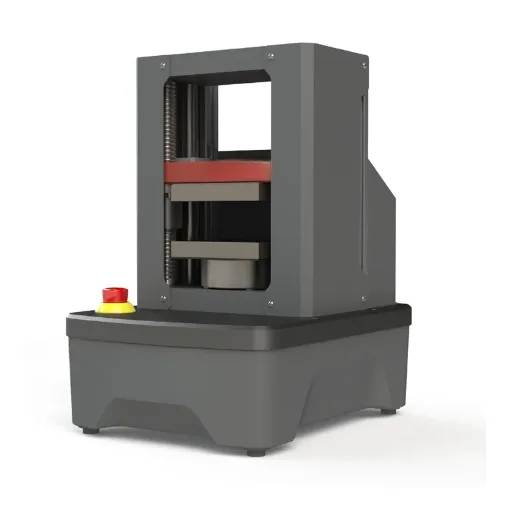
Implications for Human Safety and Environmental Impact
Force testing is a key factor in the safety of humans and the environment. The testing of products by applying forces ensures their reliability and life span, thus, the need for such testing is not only for safety but also for humans and the environment. Through searching for the points of weakness and failure, testers are able to stop accidents and injuries that could arise from machine failures or the collapse of structures. A good example is provided by the automotive and aerospace industries wherein force testing certifies that parts are indeed capable of withstanding the stress applied to them, hence the protection of users and workers.
The environmental toll of force testing is, however, a lot less than the benefits it brings. Testing has a way of making the materials and products more efficient, hence, less waste during production and operation. In fact, one could say that it is the manufacturers’ ability to evaluate the life expectancy of the materials that leads to the creation of sustainable products with longer lifetimes. The support of force testing to eco-friendly practices in different industries comes in the form of the reduction of waste of materials and the increase of efficient use of resources.
Moreover, being ethical in the force testing process brings about accountability and openness. The commitment to safety and sustainability usually means that the standards of regulators have to be met. These standards are to safeguard both humans and nature, thus underscoring the greater obligation of industries. By making these ethical issues a priority, force testing is contributing not just to the safety of practices but also to a greener future.
Regulatory Standards and Compliance in Testing Practices
The regulatory standards in force testing are meant to ensure that products across different industries are safe and reliable. These standards are uniform, established by authoritative bodies, and they play the role of resolving the main issues related to the products – strength, durability, and performance under different conditions. Compliance to these regulations is a must; it implies that the products are up to the minimum safety and quality standards. Not complying with the standards can attract penalties, product recalls, and the consumers and the environment can suffer because of this.
Adherence to regulatory compliance in force testing implies going through a structured process of validation, documentation, and reporting for the successful demonstration that all the testing procedures have been followed according to the required guidelines. The reliability of documenting procedures is very important as it acts as evidence and gives transparency for audits or inspections. Moreover, practicing compliance will not only prevent legal and reputational risks but will also help in building trust with customers and stakeholders.
Industries by make regulatory compliance their priority will not only be able to meet their legal obligations but also be part of the public safety and environmental protection efforts of a larger scale. Uniformity of testing protocols results in more consistent product performance which is advantageous for all consumers and manufacturers. In the end, the commitment to these practices will be a push factor for innovation while being in line with the ethical and sustainable production objectives.
The Life-Cycle of Force Testing
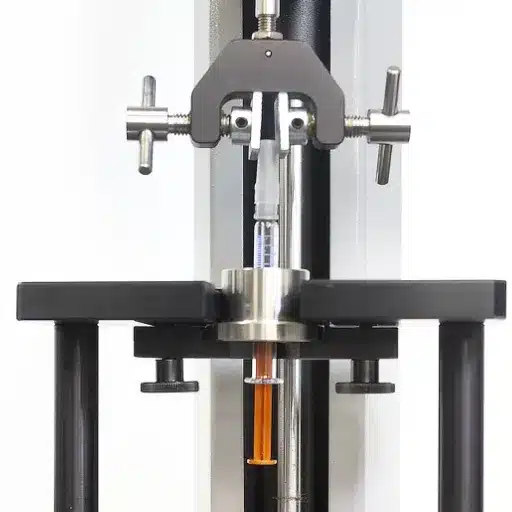
From Development to Implementation
The force testing procedure guarantees that products are of good quality and conform to durability and safety standards during the entire life cycle of the product from the stage of designing to the end of the product’s usage. The development phase is the starting point of the process, during which the engineers and designers define the mechanical and performance characteristics the product should possess. Initial prototypes are made and then they are subjected to some first force tests in order to evaluate their strength, flexibility, and resistance to simulated conditions. These tests are beneficial in identifying early design defects and making the changes needed before the start of mass production.
After the approval of the designs, the focus of the implementation phase shifts to the testing during the more rigorous manufacturing process. The force testing procedures are made uniform so that every item produced can be considered as having the same quality. The quality control departments carry out random checks to consistently confirm that the products placed on the market are secure and meet the performance standards. Stress, compression, tension, and fatigue tests might be included in this stage, depending on the use of the product and the standard it must meet.
In the end, post-market testing and assessment confirm that the products continue to perform as desired in real-world conditions after they have been released to the market. Customer feedback, performance data, and continuous testing all play crucial roles in the process of product refinement and the development of future designs. Following this comprehensive life-cycle, force testing is transformed into a key driver of safety, reliability, and innovation in product development.
Case Studies: Real-World Applications
🚗 Testing of Forces in the Automotive Industry
One of the main methods used to guarantee the safety of vehicles is force testing. A vehicle is subjected to a crash test simulation in which its most critical safety components, namely, seat belts, airbags, and the overall structure, are put under stress and their functionality evaluated. This process assists the engineers in determining the most vulnerable areas of the design through these tests and, consequently, to make the vehicle less prone to fatal injuries. There have been case studies in which the use of force testing has been directly linked to a drop in case fatalities during car-to-car collisions because it has made the vehicles more resistant to the impact.
🏥 Testing of Medical Equipment
Force testing is also very important in the medical devices area, especially for such equipment as surgical tools and implants. These devices are put through a series of repetitive stress tests to simulate the usage of these devices over long periods of time; they are thus considered reliable for being within the human body. For example, a shortage of prosthetics has to be used at varying pressure levels so that they are certified to last long without losing effectiveness. This step has been crucial in eliminating patient safety issues due to device malfunctions.
✈️ The Development of New Technology in Aerospace Engineering
Validation of materials and parts for extreme conditions is the aerospace industry’s primary dependence on force testing. These assessments, which range from tensile strength tests of the fuselage materials to the cutting-edge evaluation of turbine blade integrity, are in charge of assuring that the aircraft will not suffer from abnormal stresses during the complete range of flying operations—taking off, cruising, and landing. Studies have proved that comprehensive force testing increases the reliability and lifetime of aerospace products, thus, securing safety even when operating at very high and fast.
Future Trends in Force Testing
The future of force testing is automation and precision as the main features of the process with the help of robotics and AI among others to define the trend. Testing has been improved by automated systems that are doing the work, that is, every step of the way, from planning the experiments to the completion of data analysis. One essential use of AI is giving predictive analytics, which is the case of learning from the past to give forecasts of the areas that might be problematic even before they happen. This not only improves the requirements for safety to be followed, but also lowers the costs related to the mistakes in design and the consequent repairs according to the customer’s opinion.
The combination of modeling and simulation is another important trend in the testing process. Digital twins, the virtual duplicates of physical systems, allow the engineers to try and monitor the structures in real-time under different conditions, without any risk of damage to real components, and so they can even do it to their benefit. This technology is giving more knowledge about stress behavior, and thus, it is the case that predictive maintenance and life-cycle assessments are done with a very high degree of accuracy now. When physical tests are supplemented with simulations in the industry, the testing time and resources required can be significantly reduced.
Lastly, the advanced materials form the basis of changing the force testing industry trend. The new-generation materials like composites and superalloys require totally new and bespoke testing methodologies that will understand their special properties. The advanced materials can be easily made into any form but their structural behavior is very complex and so the conventional testing systems need to be changed to cope with this scenario. The coexistence of sustainability with innovation and others is a trend that has made force testing, and it will remain so, to be exponent of the engineering and manufacturing fields.
Frequently Asked Questions (FAQ)
❓ What is forced testing?
Forced testing is the technique that systematically assesses products or materials under certain conditions so that their mechanical resistance and performance are determined. The examination, in most instances, involves the application of either tensile or cyclic stress to the samples, giving the engineers an opportunity to measure the force that is required for the attain of the results they want.
❓ Why is forced testing important in material testing assessment?
Forced testing is the methodology that most material testing assessments rely on since it can detect the mechanical properties of materials. Manufacturers, by knowing how a material behaves under stress, can be sure that their products are suitable for the intended use and comply with the safety standards set by organizations such as the Department of Health and Human Services.
❓ What types of tests are involved in forced testing?
Forced testing could encompass other mechanical tests such as static load tests, peel tests, and tensile tests. These kinds of tests are aimed at evaluating the durability and performance of materials used in various industries, thus establishing that they are able to resist the forces that will be applied to them in real-world scenarios.
❓ How does forced testing ensure repeatable results?
Forced testing makes use of specialized equipment to carry out the tests under a controlled environment, and this is one of the ways the results are made repeatable. By applying standard procedures and fixtures, manufacturers are able to produce consistent measurements that substantiate the effectiveness of their products throughout the entire production process.
❓ What role does empirical data play in forced testing?
Empirical data that is collected during forced testing is very important for knowing how materials react under the influence of stress. The data is what engineers and manufacturers know the strengths and weaknesses of their products, thus they will be able to make the right decisions when it comes to design and material selection.
❓ How is forced testing used for quality control?
Forced testing is employed in quality control by gradually testing the mechanical strength of materials at the production stage. If any weaknesses are detected early, the manufacturers can make adjustments to their products in order to get them to the required specifications and standards.
❓ What certifications can be obtained through forced testing?
Several different certifications could be granted through forced testing, with the specific one(s) determined by the relevant industry and the particular standard(s) being met. The certifications are proof that the products or materials have been through intensive testing and are in line with health and safety regulations, which in turn provides assurance to buyers.
❓ Can forced testing be applied to all types of materials?
Forced testing can indeed be done on a variety of materials, but specific testing methods and parameters are likely to differ from one material to another. A customized approach may be needed for each material to properly gauge the force and evaluate its mechanical properties.
❓ How do specialized equipment and fixtures impact forced testing?
Specialized equipment and fixtures are indispensable in forced testing as they offer the right conditions for precisely measuring force and studying the behavior of materials. Having the right calibration and the right design of these tools means that the tests will result in reliable and valid results, thus improving the entire testing process.
References
-
Validating a Forced-Choice Method for Eliciting Quality-of-Written Arguments – A study investigating the validity of forced-choice methods in evaluating written arguments.
-
Multidimensional IRT for Forced Choice Tests: A Literature Review – A paper introducing a modeling framework for forced-choice tests, including response formats and decision theory.
-
Efficacy of Forced Choice Testing in Detecting a Secret – Research on the effectiveness of forced-choice testing in detecting deception.
-
Pressure Grows to Ditch Controversial Forced Swim Test in Depression Studies – A discussion on the forced swim test and its relevance in depression studies.
-
Forcing the Issue: Testing Gecko-Inspired Adhesives – A study on controlled-force systems for testing gecko-inspired adhesives.

